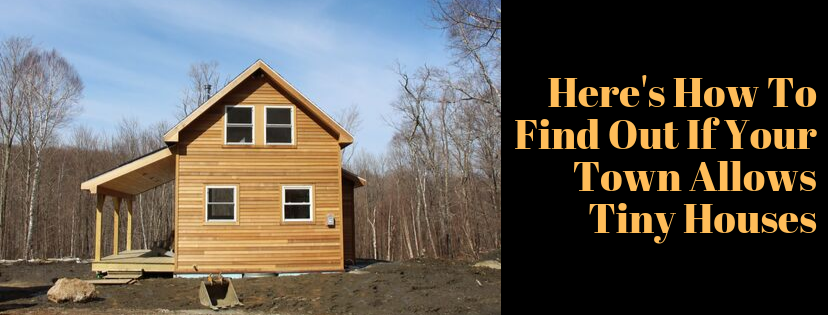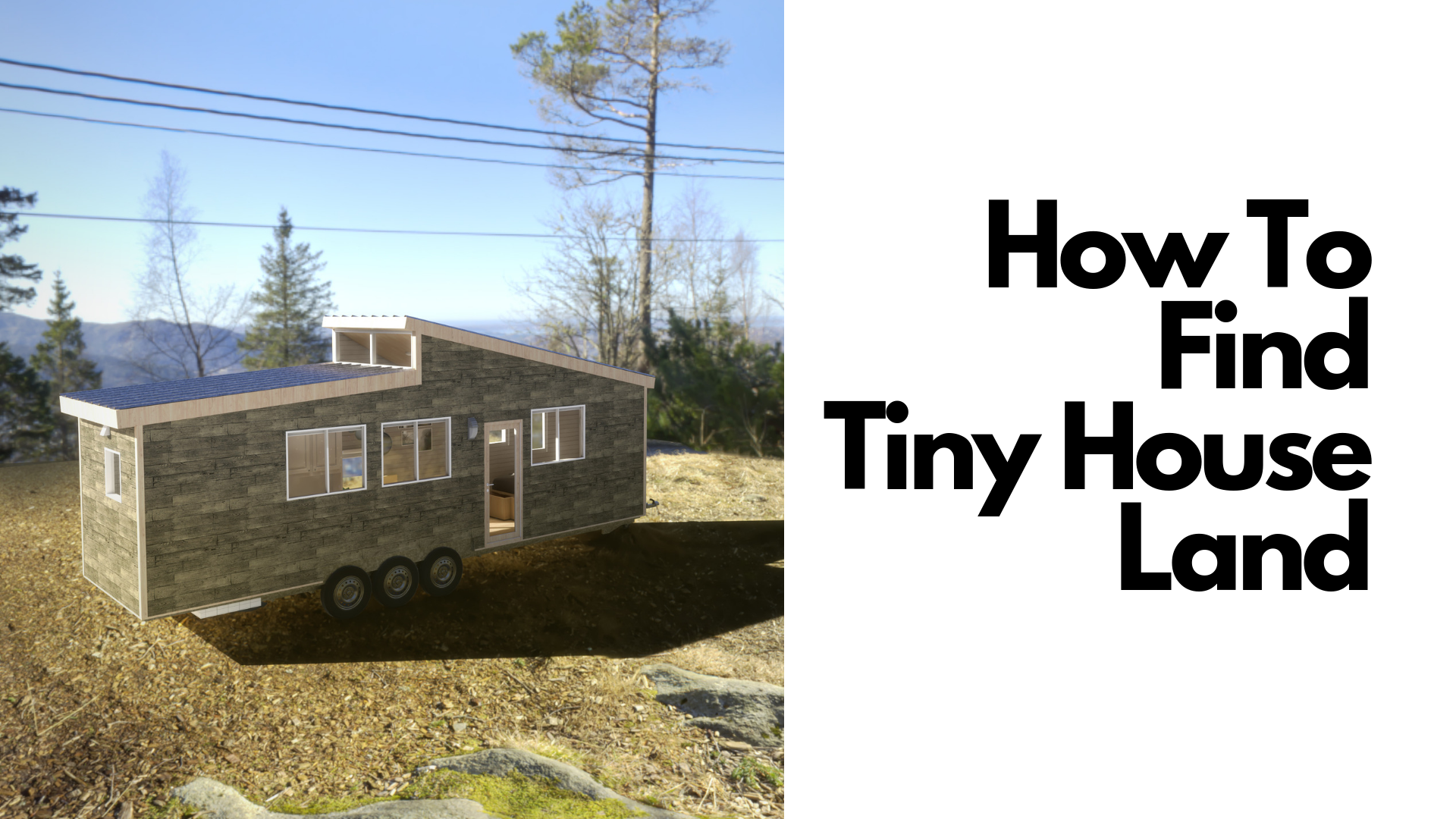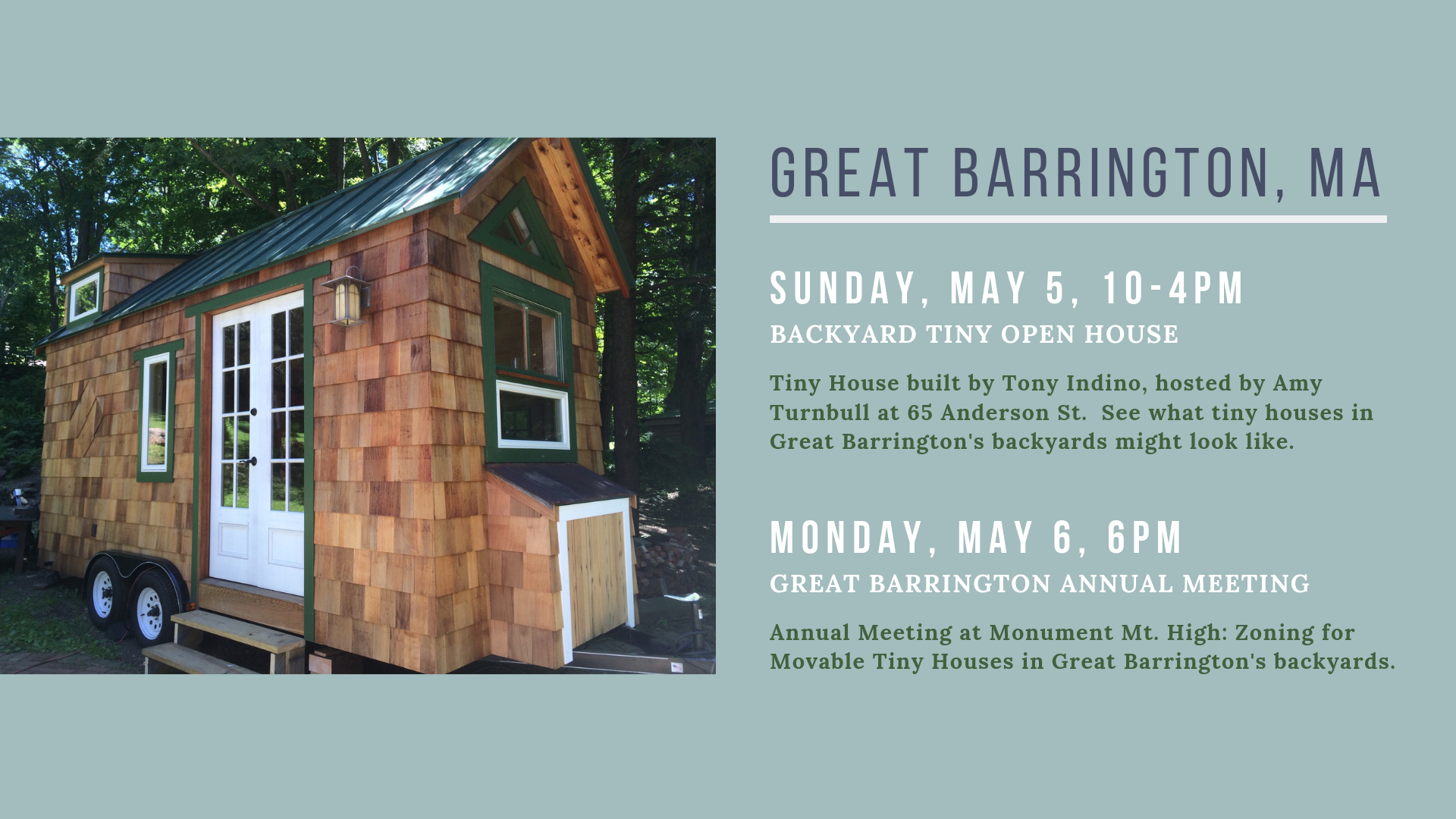Here’s How To Find Out If Your City or Town Allows Tiny Houses in 3 Steps
/in Zoning /by Rick PorcoHere’s how to find out if your city or town allows tiny houses.
1. Look up zoning codes.
Zoning codes for many municipalities can be found on your town’s website or on ecode360.com.
Here are some helpful search terms:
If you’re hoping to put a tiny house ON WHEELS either on its own property or on a property with other buildings:
- Tiny House
- RV, Recreational Vehicle, or Recreation Vehicle
- Park Model (if your tiny house is greater than 8.5′ in width)
If you’re hoping to build a backyard cottage ON A FOUNDATION:
- ADU or Accessory Dwelling Unit
- Detached ADU
- Accessory Apartment
If you’re hoping to build a small house ON A FOUNDATION on its own piece of land:
- Minimum Square Footage, Minimum SF, Minimum Sq Ft, or Minimum Sq. Ft.
- Frontage (some towns don’t have a minimum square footage but they have rules on how big the road-facing portion of the house is based on the percentage of road frontage the property has)
Appendix Q for tiny houses on foundations:
If you’re hoping for a tiny or small house ON A FOUNDATION, look into whether your state has adopted Appendix Q for tiny houses into its building code. Appendix Q is a set of safety standards for houses on foundations that are 400 sq. ft. and under, basically providing standards for how lofts and ladders are built. More info on Appendix Q for Tiny Houses here. If your state hasn’t adopted Appendix Q, that doesn’t necessarily mean you can’t build small: it just means you’ll have to follow your state’s existing building code for lofts and ladders, and the other details in the Tiny House Appendix.
On January 1, 2020, Massachusetts and California simultaneously will join Maine, Idaho, Oregon and Georgia as the first six states to adopt the Tiny House Appendix into their building code. Many other states are in the process of adopting the Tiny House Appendix. The Tiny Home Industry Association has updates on Appendix Q across the United States.
Please note: there may be more lenient rules depending on whether your tiny house will be used seasonally, as a “guest house”, “camper”, or “cabin” rather than as a full-time, permanent residence. If you’ll only be using your tiny house sometimes, residential zoning laws and building codes may not apply. Check in with your municipality if this is the case.
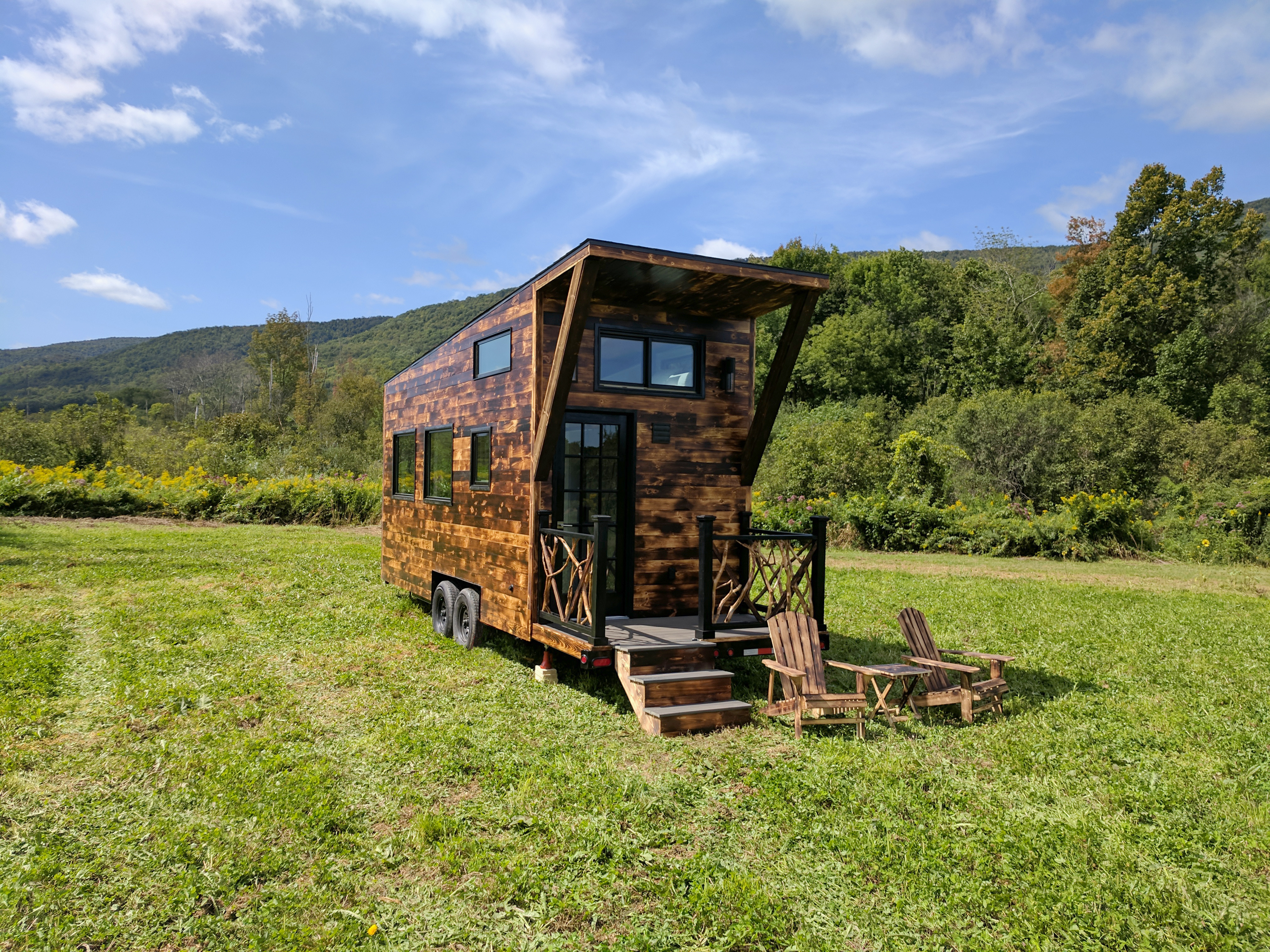
Photo: Arcadia Tiny House on Wheels. This tiny house can travel, and it’s certified as an RV. It’s currently being used as a guest house at Woodlife Ranch; it isn’t someone’s permanent home.
2. In the (likely) event there are no tiny-house-specific zoning codes, shoot your town zoning board an email.
If you can’t find any info on tiny houses in the town’s zoning but would like to know whether a tiny house on wheels or on a foundation would be legal to live in full-time, send a quick email to your town’s building inspector or zoning board (you can find their contact info on your town’s website).
Be sure to include the following information:
- What kind of tiny house you’re inquiring about (on a foundation or on wheels?)
- What code the house would be built to (if it’s on a foundation, does it comply with Massachusetts residential building code? If it’s a tiny house on wheels, is it certified by the RVIA or another third-party inspector?)
- A description of where you’d like to put it (in a backyard, on its own lot, or in a community) and the address so your zone can be confirmed. If you don’t have an address in the town but would like to move there, let them know that as well.
They’ll be able to tell you whether tiny houses are legal.
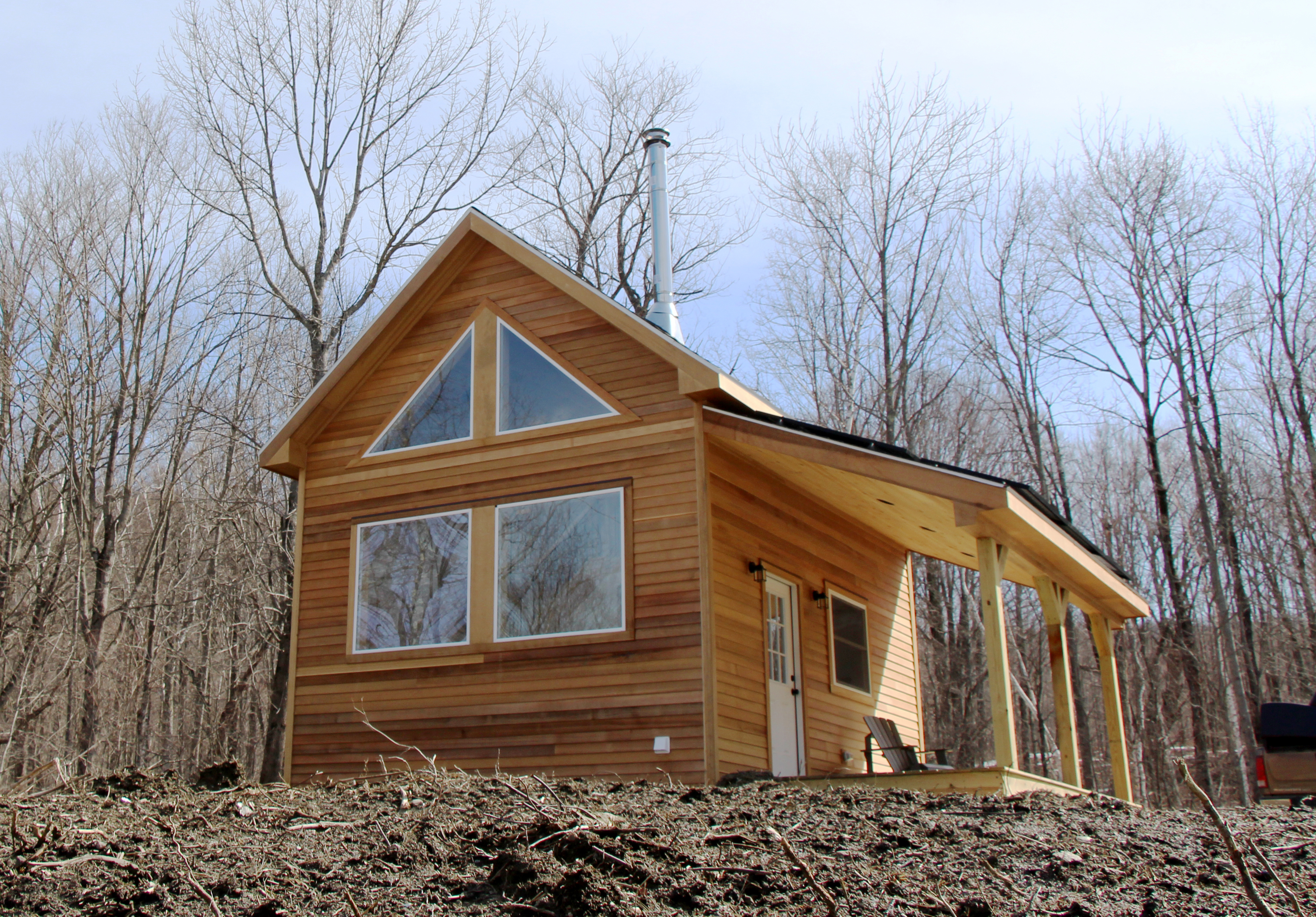
Photo: Green River Small House. This house was built on-site, piece by piece, and it is compliant with local zoning bylaws and state building code. It’s being used as a permanent, year-round home.
3. If there aren’t any tiny house zoning bylaws yet, you can request your town changes their standards (and you don’t have to be an expert to ask!)
If tiny houses are not currently included in the zoning bylaws, your zoning board will be able to advise you whether it’s worth pursuing a change to the zoning bylaws. Generally this process takes a while, and the zoning board will guide you through it. You don’t have to be an expert to request a zoning change, just an interested citizen! Be prepared with knowledge of how having tiny houses would help your town or city. Here are some examples, which you can tailor to the specific needs of your municipality:
- If your town center has historic buildings but downtown housing prices are excluding a large chunk of the population from living there, adding tiny houses (either on wheels or on foundations) to backyards as ADUs (Accessory Dwelling Units) can densify and diversify neighborhoods without destroying their architectural character. Don’t tear down those beautiful old buildings to add more households: add backyard cottages instead!
- Tiny houses on wheels can provide flexible temporary living spaces for those who may need a live-in caregiver for a few years. This setup is great for those who are aging in place and need a caregiver close by, a disabled adult living in the ADU in the backyard of their family, or an ill person who cannot live on their own but needs the privacy of their own living space. If necessary, tiny houses can be built wheelchair-friendly (check out the Wheel Pad).
- Tiny houses on wheels are also great for people in traveling professions, like military personnel, travel nurses, or agricultural workers. However, these people need places to stay. Allowing landowners to rent out a space for travelers helps them earn extra income while adding spaces for traveling workers to live that cause a low impact on the environment.
- A pocket community of tiny houses on wheels or small homes on foundations can add much-needed housing stock (let’s be honest, there’s a housing shortage almost everywhere in the US) that is more affordable than the large homes that most developers are building now.
It’s best to do this before you have your tiny house built. This way, you can be flexible in your design, making sure it conforms with the standards the town creates.
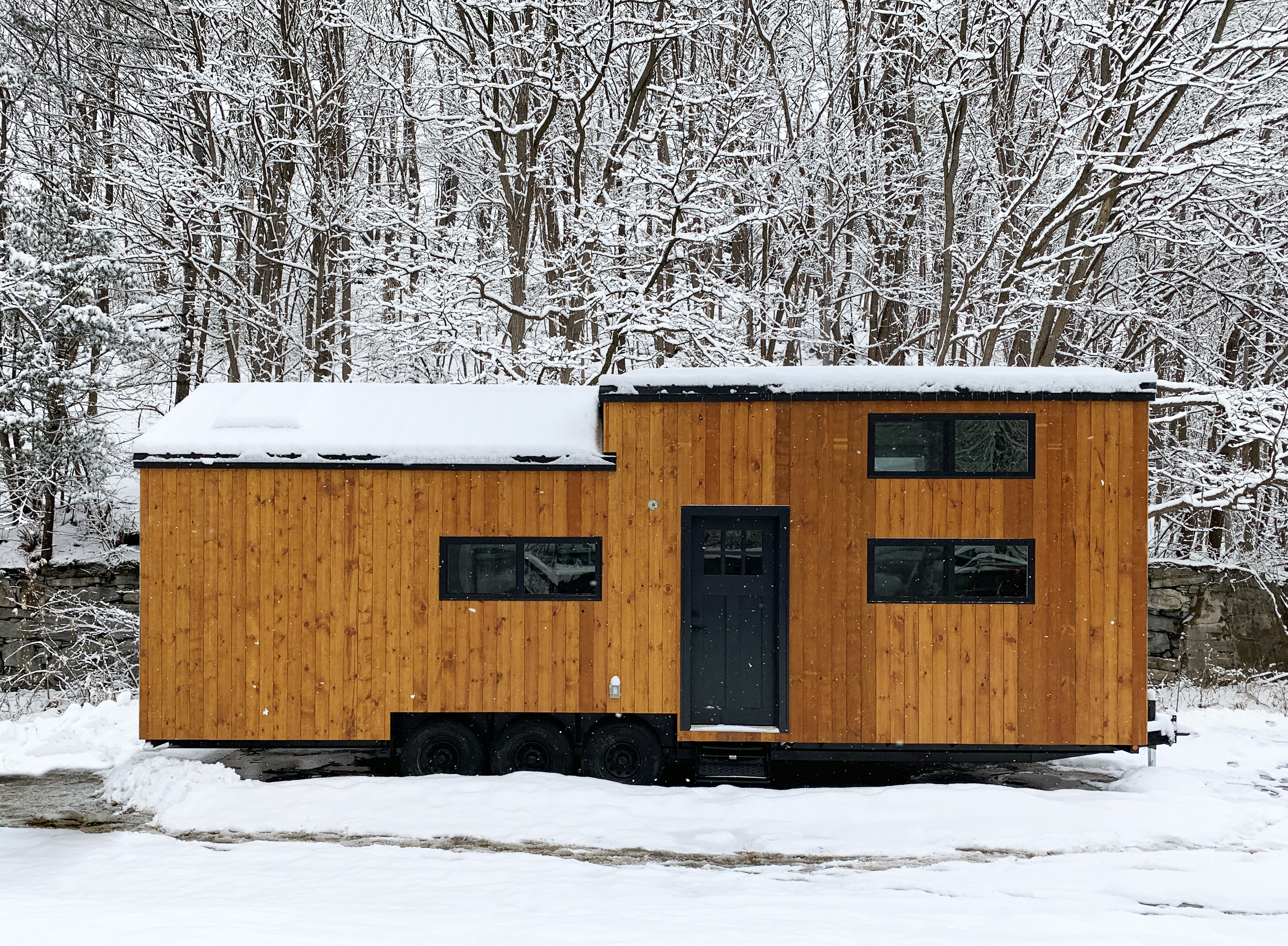
How To Find Tiny House Land: Resources and Knowledge You’ll Need
/in Zoning /by Rick PorcoFor many tiny housers, finding land is the toughest part of the journey. Here’s how to start your tiny house land search.
Before having your tiny house built, you should already have a spot to put it lined up. You don’t want to end up with a tiny house and nowhere to put it!
Because tiny houses are a relatively new phenomenon, most municipalities have never had anyone approach them to ask whether they can live in a tiny house. Therefore, most municipalities don’t have any bylaws saying you can or can’t live specifically in a tiny house. Use this guide to learn what you’ll need to know to get the perfect parking spot for your tiny house.
Start Here:
Learn about the tiny house buying process.
The 8 Steps To Buying A Tiny House: Everything You’ll Need To Do To Go Tiny
This post covers your entire tiny house buying process, and the first and most important step is finding a place to put it. Whether you’ll be buying or renting land, familiarize yourself with the tiny house buying process and how long it’ll take, before starting to your land search.
Learn how to look up zoning laws and how to ask your zoning board to live in your tiny house.
Here, you’ll learn how to find and read your town or city’s zoning laws to find out whether there are already rules for tiny houses, whether on foundations or on wheels. If your town doesn’t have laws pertaining to tiny houses, you’ll learn how to approach your town to ask. Importantly, you’ll also learn what to look for in the land, including hookups for fresh water, waste water, and power.
- If you’re in Massachusetts like we are, check out this list we’ve started Massachusetts towns that have rules specifically about tiny houses, whether on foundations or on wheels. If you have info on a town that’s not on the list, please contact us to add it! Where In Massachusetts Are Tiny Houses Legal?
- No matter where you’re looking for tiny house land, if you need to convince your local zoning board and/or building inspector why they should allow tiny houses, this post is a great example to follow. How Dominique Kerins of Auburn, MA Convinced Her Town’s Zoning & Building Inspector To Approve Tiny Houses
Rent or buy land for your tiny house.
Where Can I Put My Tiny House? A Near-Comprehensive List Of Tiny House Parking Resources
Now that you know how to look for zoning laws and get permission to live in your tiny house, you’ll need to do some networking to find a spot for it! Facebook and Meetup are both great networking sites for tiny house enthusiasts, and this list links to Facebook and Meetup groups about tiny houses in almost every state. In addition to networking on tiny house specific sites and groups, advertise on local forums on Facebook, Craigslist, and community bulletin boards asking for those willing to rent out or sell land for a tiny house. The sooner you find land the sooner you can get started with the build. Good luck, and let us know how your land search goes!
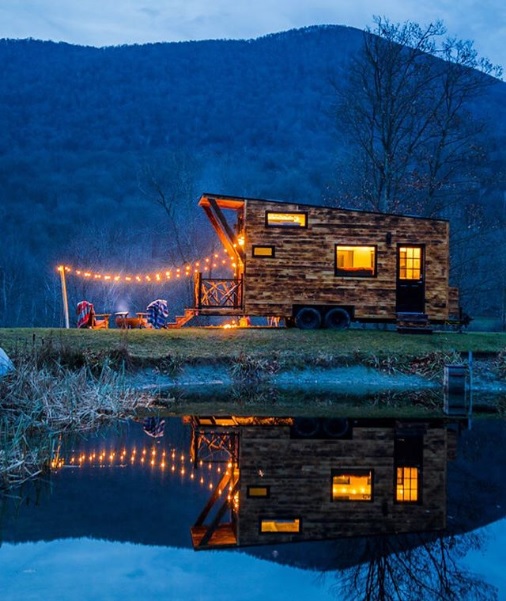
Arcadia Tiny House at Woodlife Ranch. Photo by Kyle Finn Dempsey
Where In Massachusetts Are Tiny Houses Legal?
/in Zoning /by Rick Porco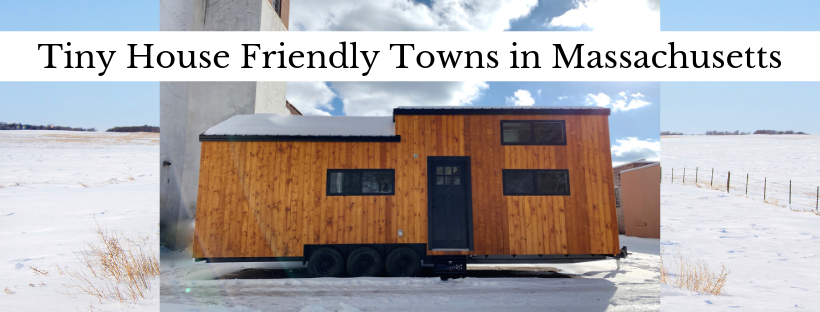
Where Can You Put A Tiny House in Massachusetts?
With your help, we’re compiling a list of every city and town in Massachusetts and its attitude toward tiny houses on wheels and on foundations. This is part of a larger initiative by the American Tiny House Association to gather tiny house information for every state in the US. (Katie at B&B Tiny Houses is also ATHA’s northeast regional director.)
As you’ll see in the chart, most cities and towns don’t already have a policy on tiny houses, whether on foundations or on wheels, so their stance on tiny houses is currently unknown. Municipalities probably won’t consider whether to allow tiny houses unless someone brings it up with them! As we’ve seen in Nantucket and Auburn, all it takes is one person to ask.
What Does Tiny House Appendix Q Mean For Tiny Houses On Foundations?
Tiny House Appendix Q has been adopted in Massachusetts, effective January 1, 2020. Appendix Q: Tiny Houses provides building safety standards for houses on foundations that are 400 sq. ft. and under. However, the appendix doesn’t mean you can build a tiny house on a foundation wherever you want in Massachusetts: you’ll still have to adhere to your municipality’s zoning code. Here’s more info on the Tiny House Appendix.
Please add to the list:
If you have spoken with your municipality’s government (zoning board, building inspector, or someone else) about tiny houses on wheels or on foundations, we would love to add your info to the list. There’s even a column for rumors, if you’ve heard a town might be amenable to tiny house living but haven’t spoken with them directly yourself.
How to find out if your city or town allows tiny houses:
Zoning codes for many municipalities can be found on your town’s website or on ecode360.com.
If you haven’t spoken with anyone in your city or town government yet but would like to know whether a tiny house on wheels or on a foundation would be legal, send a quick email to your town’s zoning board (you can find their contact info on your town’s website).
Be sure to include the following information:
- What kind of tiny house you’re inquiring about (on a foundation or on wheels?)
- What code the house would be built to (if it’s on a foundation, does it comply with Massachusetts residential building code? If it’s a tiny house on wheels, is it certified by the RVIA or another third-party inspector?)
- A description of where you’d like to put it (in a backyard, on its own lot, or in a community) and the address so your zone can be confirmed. If you don’t have an address in the town but would like to move there, let them know that as well.
Someone on the zoning board be able to tell you right away whether tiny houses are already approved. If tiny houses are not currently mentioned in the zoning bylaws, they’ll be able to advise you whether it’s worth pursuing a change.
If you have info on a specific municipality, please email info@bbtinyhouses.com and we’ll get your info added to the list.
Here are some tips to use the spreadsheet effectively:
- The spreadsheet retains its formatting if you’re on a computer rather than on a mobile . If you’re on a mobile you won’t be able to sort columns.
- To sort a column, right-click the letter at the top of the column and select “Sort A-Z”. For example, if you want to see all the towns in Hampden County, right-click “B” at the top of the second column (or click the small triangle next to “B”) and select “Sort A-Z”. Then scroll down to where the Hampden County section starts. If you only want to see towns with information added about tiny houses on foundations, you may select that column, which is “D”, and sort. Scroll to where the info starts.
- To see all the information in a cell, click the cell. The full text will show up in the bar above the sheet.
How Dominique Kerins of Auburn, MA Convinced Her Town’s Zoning & Building Inspector To Approve Tiny Houses
/in Zoning /by Rick PorcoDominique Kerins and her husband wanted to put an accessible tiny house in the yard of their regular-sized home in Auburn, MA for her aging grandmother, so she inquired whether that would be possible at her Town Hall.
Fast forward a couple months, and Auburn’s Annual Town Meeting was last night. Tiny Houses were the last item on the warrant to discussed, and it passed!
So how did she do it? Dominique was gracious enough to get a sitter for her kids in order to grant us an interview.
Auburn’s Town Meeting Warrant can be read here. The tiny house articles are #33 and #34; you’ll read more about the distinction between the two articles in the interview. The approval process isn’t over yet: next, it’ll be sent to the Massachusetts Attorney General Maura Healey (who visited the B&B Tiny Houses workshop last year) to be signed into law for the town of Auburn.
We are so grateful to Dominique for pitching the idea of tiny houses to her town, and in doing so, paving the way for others to do the same in their own municipalities.
First, what’s the background story? What originally led you to ask your town for permission to put a tiny house in your yard?
- My husband and I were looking to make changes to the Auburn zoning bylaws so that our family could build a Tiny Home on our property for our aging Grandmother, who currently pays 9K/month for senior housing in Medfield. Our intention was to keep down costs for her, and for us, and to prioritize multigenerational living. We opted for a THOW [Tiny House On Wheels] in our side yard, not only because they’re awesome but because they offer many strengths in creating a solution specific to our unique situation. THOWs offer strengths like affordability, accessibility and adaptability. All other alternatives considered or tried (like senior housing, and building on to our current single-family home) are unaffordable, and are not ideal for the long-term!) THOWs on the other hand can be easily re-purposed, sold or simply relocated. It happens to be a BONUS that THOWs promote healthier living and green initiatives.
Did you originally intend to get permission solely for tiny houses meant for caregiving, or was that restriction suggested by the planning board or another entity?
- We certainly wanted to keep as many options open to the public as humanly possible, maintaining that people should be able to do what they see fit on their own parcels of land. Unfortunately, after a lot of planning board meetings and emails, we were forced to accept the negotiated terms if we were to gain any traction with the town. Nevertheless, we came to realize that the narrowed (senior and disabled) audience had most to gain, especially given that Auburn has the HIGHEST population of elders in their 60’s and 70’s across the state. All other audiences (college students, for instance), or persons looking to save money, may have a bit more time than the elders for the bylaws to be altered and tweaked down the road!
What was the process? How long has this process taken so far? What are the next steps for Article 33 to come to fruition?
- We went to the Town Hall, in February of this year, thinking that the Zoning Enforcement (Building Inspector) would have most insight on the feasibility of building tiny in Auburn. He did provide insight, and some healthy skepticism that led us to be more prepared for questions presented by the Planning Board, roughly 1 month later.
- The Building Inspector directed us to speak with the Town Planner, who had more information about the collaborative efforts of the Planning Board and the creators of the town’s Master Plan (which I read prior, and understood to give priority to the seniors in Auburn).
- The Town Planner encouraged us to do 2 things:
- Create a citizen’s petition, requiring signatures from the town’s (voting-age) residents in support of our idea.
- Solicit recommendation and support from the town’s Planning Board and Selectmen in order to compose more detailed language to present to the Town Hall.
- The first item was easy. The second required attending many Planning Board meetings, and a bit of bickering and emailing.
- Realizing that the Town backed their own detailed bylaw (and not our original language), we felt it best to work with them; I made phone calls to voters in our precinct to ask for their support, and mailed a letter to all voters to do the same, instructing them to support Article #33 at Town Hall.
- At Town Hall, we sat as members of the audience, quietly, biting our fingernails, as we watched the Town Planner present the Bylaw proposal. After time (and confusion at the Town Meeting), the Bylaw was approved by a 2/3 vote.
- Next, the bylaw gets sent to Atty. General for approval! In the meantime, I have written Representative Frost (who is an Auburn resident) to ask for his support in expediting the approval process.
I understand you and your husband are builders and plan to build your own tiny house. Did the town of Auburn ask you to build it (or prove that it has been built) to a particular set of standards or code?
- …We have done a lot of building in the past. My husband is a concrete mason and is gifted as a handy man. We have completed a lot of renovation projects, mainly in basements, (in our particular home, the renovated basement wouldn’t suffice for our elderly grandmother, for obvious reasons). The town… asked that we ensure that it is built to the town’s standards as well as those specified by the state and the federal government (and HUD). IRC – the international residential building code, will inform the building standards. Thankfully, my husband is well versed in the language of building codes!
- I should also shout out to the awesome Design & Build school, Yestermorrow, in Vermont, for having providing so much valuable insight on the ins and outs of Tiny Home construction!!!! The class was invaluable to preparing us for the questions presented by the Town.
Before now, have you ever been involved in a political or government process? Did you reach out to others for help or guidance along the way? Are there any other Auburn residents you know of who are interested in having their own tiny houses?
- Besides my exposure to college-level or professional procedural hearings, I had not been involved in politics. Reaching out to neighbors was very helpful, as was the opportunity to read Katie Jackson’s updates [Ed. Note: hey, thanks for the shoutout!] and other bloggers on tiny living. Just knowing that others are going through similar situations has been extremely insightful and comforting.
What advice would you have for others looking to ask for permission to have a tiny house in their own municipality?
- Look at the town’s bylaws. Pay attention to the wording, formalities and procedural recommendations.
- Network – not only at Town Hall (knowing your Selectmen, Town Planner, Zoning enforcement officials, Planning Board and Clerks) but also the Fire Chief, Police, and regular folk too!
- Have details READY (blueprints, preexisting example images, placement plans, building plans etc.) The town asks A LOT OF QUESTIONS!!!
- Consider taking a class (as above mentioned, Yestermorrow was really helpful for DIY building advice!)
- Be prepared for lots of questioning, answering and follow-up, and try your best to stay positive ☺
Finally, do you have images you’d like to share?
- This is our own mock-up, that I’ve created using a program, Home Designer Pro. The wheel wells are “hidden” by a “skirt” in the picture. SketchUp was also helpful in rendering templates with trailers. They have a 30 day free trial, which is nice.
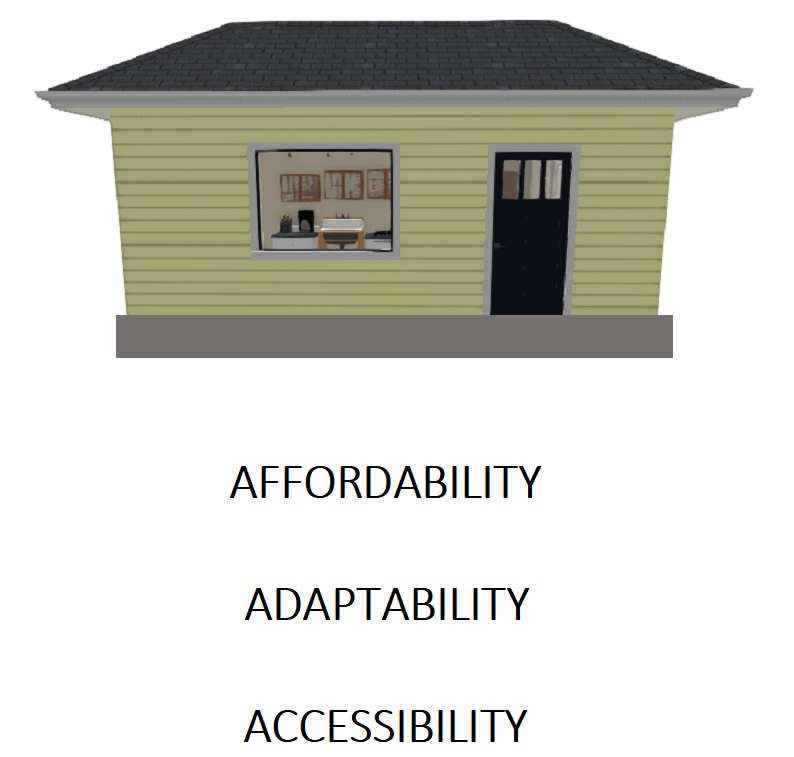
Dominique’s Self-Designed Tiny House For Her Grandmother
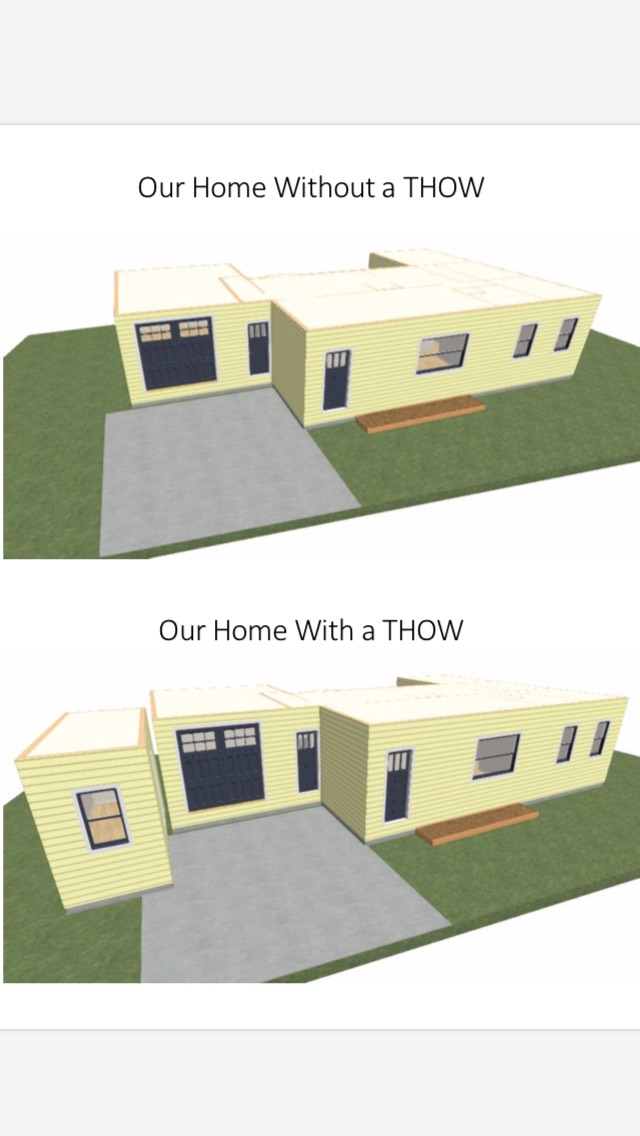
Rendering: Dominique’s Self-Designed Tiny House Next To Her Home
Great Barrington, MA Will Vote On Backyard Tiny Houses May 6
/in Zoning /by Rick PorcoThe planning & zoning board of the town of Great Barrington, MA is considering allowing tiny houses on wheels, or movable tiny houses, as Accessory Dwelling Units in the back yards of existing houses.
The tiny house amendment has gone through all the previous stages of approval: registered voters in Great Barrington will vote on whether to allow them at the annual town meeting on May 6.
Background Info:
Katie Jackson of B&B Tiny Houses was asked to do a presentation at a planning board meeting on what tiny houses are, how they work, and how other cities have written them into their zoning code. Katie is also the Northeast Regional Director of the American Tiny House Association, which is hosting the open house on May 5.
Here’s our previous update on Great Barrington’s consideration of allowing tiny houses on wheels.
Here’s an article on Great Barrington’s Town Meeting from the Berkshire Edge.
- Who buys tiny houses?
- Why do people want tiny houses?
- Why don’t more people have tiny houses?
Backyard tiny houses will add density without having to change the infrastructure of the town; it’s the quickest, easiest solution (and one of many) that will address the housing crisis.
Here’s Great Barrington’s proposed zoning language pertaining to tiny houses:
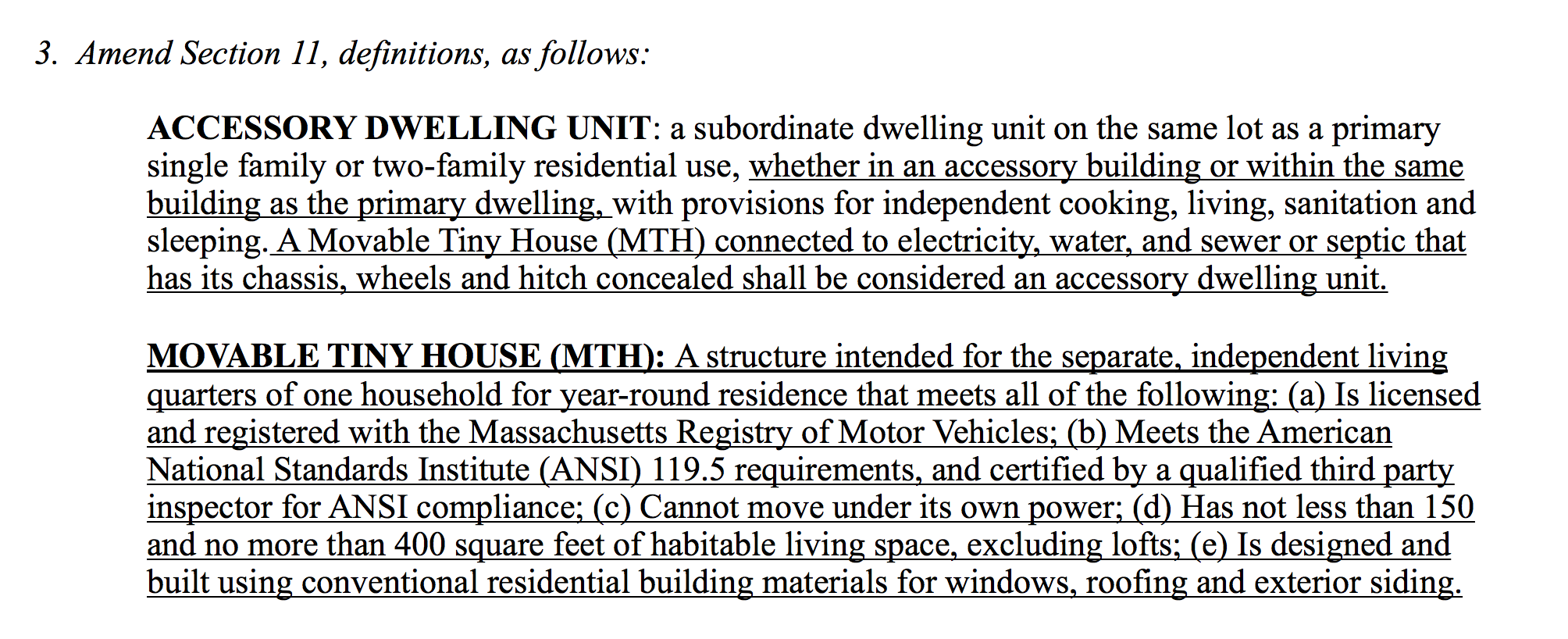
Acronym Key:
MTH: Movable Tiny House
THOW: Tiny House on Wheels
ADU: Accessory Dwelling Unit
There will be two tiny house events in Great Barrington:
-Tiny House Open House in the backyard of 65 Anderson Street, Great Barrington, MA 01230. Sunday, May 5, 10am-4pm.
Sunday’s tiny house open house is in advance of Monday’s Great Barrington Annual Meeting, where a proposed zoning amendment allowing Movable Tiny Houses as accessory dwelling units will be voted upon, among other topics. The open house is hosted by Amy Turnbull who is on the leadership team of the American Tiny House Association, with a movable tiny house built by Tony Indino of East Granby, Connecticut (this house is shown in the event flyer). This open house will give a glimpse into what backyard tiny houses might look like in Great Barrington if the Movable Tiny House Amendment passes.
-Great Barrington Annual Meeting & Vote at Monument Mountain High School Auditorium, 600 Stockbridge Rd, Great Barrington, MA 01230. Monday, May 6, 6:00pm.
Please attend the Annual Meeting on Monday in support of allowing movable tiny houses in Great Barrington backyards. The proposed amendment language is posted in the comments. All those who are registered to vote in Great Barrington may vote on the amendments.
Planning Board Meeting Recap: Backyard Cottages in Williamstown, MA?
/in Zoning /by Rick PorcoWilliamstown, MA had its planning board meeting last night, discussing whether to allow backyard cottages and second apartments to homes in certain zones of town. It was a full house, with others who couldn’t get seats standing in the hallway.
In the photo, Amy Jeschawitz, Chair of the Planning Board, sits under the town flag, depicting Williamstown’s beloved 1753 House. The 1753 House was originally called a “Regulation House” by the early European settlers, who, in order to be considered land owners, had to build a house that was at least 15’ x 18’ and 7’ tall. At 270 sq ft, this would certainly be considered a “tiny house” by today’s standards!
The size of the detached ADUs (backyard cottages) in the current proposed bylaw would be limited to between 900 and 1200 square feet, determined by the size of the existing home and its lot.
Also addressed was allowing a second unit to an existing single family home, either within or added on to the existing building. These two bylaws would mean that a single unit property within certain zones could ostensibly turn into a three-unit property.
The planning board voted 3-1 in favor of recommending the proposed bylaws, with the additional restriction of a five year wait between adding a second unit to a property and adding a third.
The bylaws will now be taken to Town Meeting.
Read more on the meeting from iBerkshires: https://www.iberkshires.com/story/59488/Williamstown-Planners-Recommend-Dwelling-Bylaw-Amendments.html
Recap: Meeting on Backyard Tiny Houses in Great Barrington, MA
/in Zoning /by Rick PorcoLast week’s public hearing in Great Barrington, MA addressed using tiny houses on wheels as backyard cottages. (If you haven’t already seen it or need a refresher, refer back to this blog post).
After the meeting, I spoke with Jonathan Hankin who is the president of the Planning Board. Here’s his recap:
- The meeting was 3 hours long and had lots of controversial items to cover! The proposed tiny house ADUs weren’t discussed, negatively or positively.
- Public comments remain open until next week’s meeting, which is on Thursday. However, since there hasn’t been any negative feedback, Jonathan seems confident it should pass without issue.
- Next week’s meeting is when all the proposed changes to Great Barrington’s Zoning Bylaws should be put on a warrant. Those changes will officially pass (or not) at the Town Meeting, which takes place the last week in May.
- All the changes that pass in Town Meeting will go to the Attorney General for review. Her report should come back in August or September. All changes that she approves will be retroactively in effect back to next week’s meeting (get your Delorean ready).
As a side note, the Massachusetts Attorney General, Maura Healey, visited the B&B Tiny Houses workshop last year and said, in front of many members of the press, that she feels tiny houses are a good affordable housing option. She has also signed the Nantucket, MA zoning bylaw allowing tiny houses, so we feel good about Atty. Gen. Healey signing Great Barrington’s as well.
-K. Jackson
Pictured from left: B&B Tiny Houses Owners Chris St. Cyr, Jason Koperniak, Mitch Bressett, and Massachusetts Attorney General Maura Healey outside the Arcadia Tiny House. Photo from iBerkshires.com.
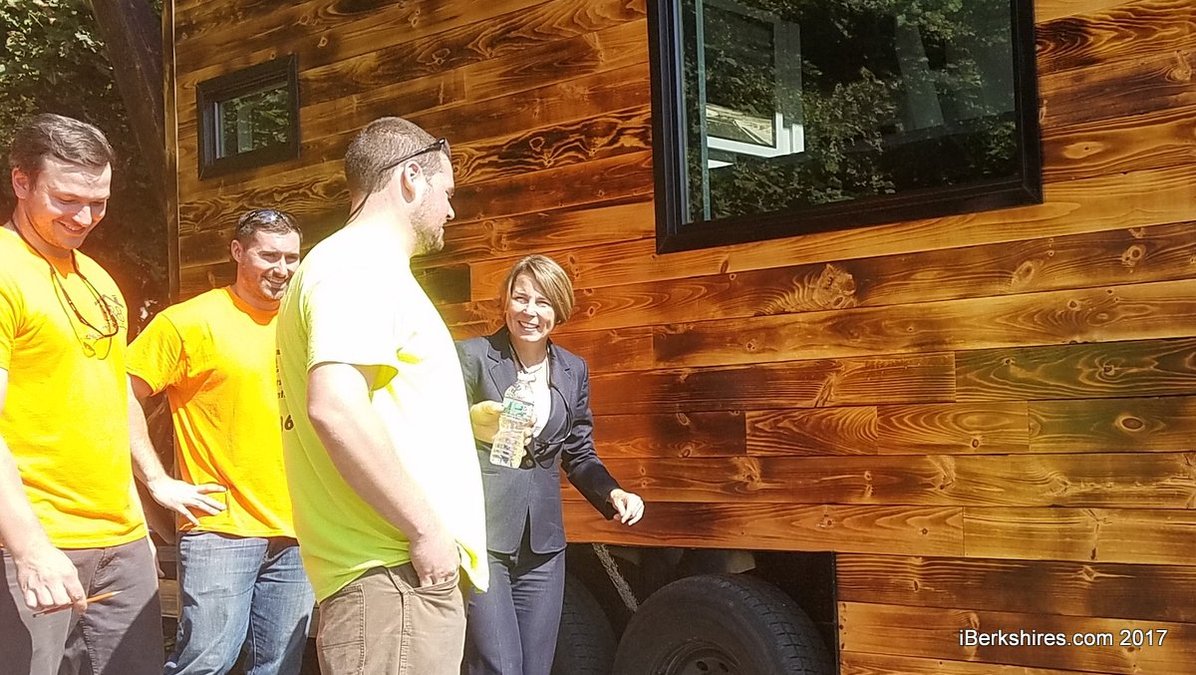
Please Support Tiny House Zoning in Great Barrington, MA this Thursday, March 7
/in Zoning /by Rick PorcoThe town of Great Barrington, MA is considering adding Movable Tiny Houses, or Tiny Houses on Wheels, to their zoning regulations, allowable as Accessory Dwelling Units (ADUs).
As proposed, movable tiny houses will only be allowed as an ADU which means there has to be a primary dwelling. A 2/3 majority at town meeting will allow them.
The Thursday meeting agenda includes a Citizen’s Speak Time, where those who live in Great Barrington can share their thoughts. Those who don’t live in Great Barrington but would like to show up in support of legal tiny houses may also attend the meeting.
This meeting will address movable tiny houses. Tiny houses that are on a foundation are already permitted as an ADU under the current bylaw and would need to meet the stretch code adopted by GB. The planning board is also seeking to increase the allowable number of ADUs to two.
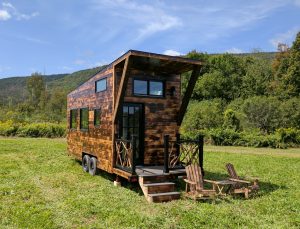
This is the proposed added language to the Great Barrington Zoning Bylaws:
To Section 11.0 Definitions add:
Movable Tiny Houses (MTH)
A structure intended for the separate, independent living quarters of one household for year-round residence that meets all of the following:
(a) Is licensed and registered with the Massachusetts Registry of Motor Vehicles;
(b) Meets the American National Standards Institute (ANSI) 119.5 requirements, and certified by a qualified third party inspector for ANSI compliance;
(c) Cannot move under its own power;
(d) Has not less than 150 and no more than 430 square feet of habitable living space, excluding lofts;
(e) Is designed and built using conventional residential building materials for windows, roofing and exterior siding.
ACCESSORY DWELLING UNIT: a subordinate dwelling unit on the same lot as a primary single family or two-family residential use, with provisions for independent cooking, living, sanitation and sleeping. (Add) A Movable Tiny House (MTH) connected to electricity, water, and sewer or septic that has its chassis, wheels and hitch concealed shall be considered an accessory dwelling unit.
(This proposed language may have been updated by the time the meeting takes place).
Please attend:
GREAT BARRINGTON PLANNING BOARD MEETING
THURSDAY, MARCH 7, 2019 6:00 PM
Great Barrington Fire Station
37 State Road, Great Barrington, MA
Read the Meeting Agenda here.
Are Composting Toilets Allowed in Massachusetts?
/in Building, Sustainability, Zoning /by Rick PorcoComposting toilets and greywater systems can be a great solution for how to deal with waste water. But are you allowed to use them on your own land in MA?
Spoiler alert: Like pretty much every code, there’s not a single easy answer that applies everywhere.
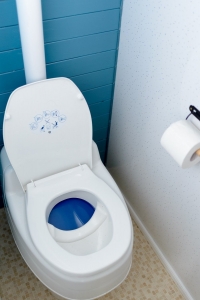 According to mass.gov, for residential homes: “Title 5 (310 CMR 15.000) allows composting toilets for Remedial Use and also certifies them for General Use in new residential construction where a system in full compliance with Title 5 could otherwise be installed. The local approving authority (typically the Board of Health) must also approve installation of a composting toilet through a Disposal System Construction Permit and Certificate of Compliance. Check with your local Board of Health for its approval procedures.”
According to mass.gov, for residential homes: “Title 5 (310 CMR 15.000) allows composting toilets for Remedial Use and also certifies them for General Use in new residential construction where a system in full compliance with Title 5 could otherwise be installed. The local approving authority (typically the Board of Health) must also approve installation of a composting toilet through a Disposal System Construction Permit and Certificate of Compliance. Check with your local Board of Health for its approval procedures.”
Read all the details here:
Source: https://www.mass.gov/files/documents/2016/08/qm/comptoi.pdf
Note that this doesn’t apply to tiny houses on wheels– only homes that are permanently affixed.
In summary, Title 5 allows for conforming composting toilets and a greywater system in new residential construction where there could otherwise be a septic system. However, this doesn’t mean it’s allowed in every town. The local Board of Health will also have to approve it.
Here’s how to get in touch with your local Board of Health in Massachusetts.
But wait: a composting toilet isn’t the only option for your tiny house!
B&B offers five different toilets for tiny houses on wheels: the best solution for you depends on where you’re parking your tiny house, whether it’ll move, what utilities are available and how often you’ll use your tiny house. Check out this blog post on the 5 Types Of Tiny House Toilets.
How To Get Started
Learn more about our process or fill out the form below and one of our tiny house experts will reach out to you.

